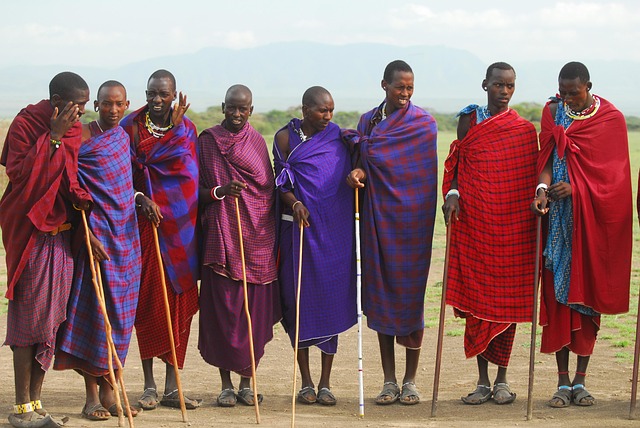In some cultures, like those in Scandinavia, there’s a real focus on promoting independence. Kids are encouraged to explore, venture into the wilds of their neighborhoods, and even learn to catch a bus solo at astonishingly young ages! It’s as if they’re given the freedom to spread their wings and fly, with parents cheering them on from the sidelines. This hands-off approach often leads to incredibly confident self-starters.
Now, flip the globe to Asia, where many cultures emphasize a deep respect for authority and collectivism. Parents here often prioritize family harmony and academic achievement. Think of it like a carefully choreographed dance, where every step is practiced until it’s perfect. Kids grow up knowing the importance of community and working together, shaping them into respectful adults.
In contrast, if we hop over to Africa, many communities embrace a communal parenting style. It’s not just mom and dad raising the kids; it’s the whole village! Here, wisdom is shared, and responsibility rests on everyone’s shoulders. Kids learn the value of belonging, and life skills are taught through storytelling, dancing, and play. It’s an immersive approach, rich with tradition and connection.
And then there’s the bustling vibe of urban America, where parenting can often feel like a juggling act. Here, you’ll find parents balancing work life with raising kids while often leaning on friends and technology for help. It’s fast-paced, sometimes a bit chaotic, but oh-so-rewarding in moments of shared joy.
So, dive into the sea of cultural distinctions and beliefs surrounding child-rearing, and you’ll discover a tapestry of love, lessons, and laughter—a profound gift passed down through the ages.
Nurturing Traditions: Exploring Diverse Child-Rearing Practices Across Cultures
Now, think about the ways people discipline their children. In some cultures, a gentle approach, focusing on dialogue and understanding, is preferred—like guiding a budding flower towards sunlight instead of forcing it to grow. In contrast, other societies might take a firmer stance, believing that structure helps children thrive in a fast-paced world. It’s akin to training a young athlete; you have to push a little to help them grow stronger.
And let’s not forget the role of community! In places like many African villages, child-rearing is a shared responsibility, where everyone contributes to a child’s upbringing. It’s like being part of a large team where every member plays a vital role, teaching kids values and traditions through storytelling and joint activities.
As we dive deeper into this rich subject, it becomes clear that these varying approaches aren’t just about different methods; they’re reflections of the hopes, dreams, and aspirations each culture holds for its future generations. It’s a thrilling journey that reminds us that there’s so much to learn from each other when it comes to shaping the next generation into thoughtful, compassionate individuals.
From Africa to Asia: How Cultural Context Shapes Parenting Techniques
In Asia, for example, you might find a strong emphasis on respect and discipline. Parents often instill values that prioritize harmony and collectivism. It’s not just about nurturing individuality but fostering a sense of belonging. Think of it as planting a garden where each flower plays a part in creating a vibrant landscape. In contrast, many African cultures celebrate communal upbringing. Children are surrounded by extended family, with each member playing an active role in their development. It’s like having a whole village as your support system, where wisdom flows from one generation to the next.

Now, let’s talk about how these cultural nuances influence discipline. In some parts of Africa, you might find a more relaxed attitude towards misbehavior, often resolved through guidance and storytelling. “Sit down and let me share a tale,” can turn the lessons from mistakes into a shared experience. Meanwhile, in some Asian cultures, strict discipline can reign, where mistakes are seen as failures that need correcting immediately. It’s like tuning a musical instrument—precision is key.
Food also plays a central role, acting as a medium of connection and teaching. In African homes, meal preparation can be a rite of passage for children, instilling cooking skills and cultural identity. In contrast, Asian homes might focus on communal dining as a way of fostering bonds. The dining table becomes a classroom, where lessons unfold beyond the curriculum.
So, as you see, parenting techniques aren’t one-size-fits-all. They’re painted vividly by the strokes of culture, tradition, and community. Isn’t it amazing how diverse approaches to raising kids can be, all rooted in the rich tapestry of human experience?
The Global Parenting Playbook: Unpacking Child-Rearing Styles Around the World

Take authoritative parenting, for example. It’s like a well-tuned orchestra, harmonizing warmth and structure. This style promotes open communication, allowing kids to express themselves while also understanding the rules. Parents who embrace this method often encourage independence, guiding their children with love rather than strictness. Think of it as planting a tree; you give it care and support, but allow it the freedom to grow in its own direction.
Now, let’s dive into the permissive style, which can feel like a breezy beach day. Parents here are the fun ones—the ice cream givers, the “yes” people who prioritize joy over rules. They create an environment filled with freedom and creativity but can sometimes struggle with boundaries. It’s like letting your child run wild in a candy store—exciting but overwhelming without a plan!
Then there’s authoritarian parenting, reminiscent of a military camp. It’s all about discipline and control, where rules are set in stone, and obedience is expected. This style can build strong foundations, teaching kids about respect and order but can also stifle creativity and self-expression.
Beyond Borders: A Comparative Study of Child Development Practices Across Cultures
Take, for example, Scandinavian countries, known for their emphasis on independence. Kids are encouraged to play outside, explore, and even navigate public transport on their own at a young age. This approach nurtures confidence and self-reliance, almost like giving a young bird the chance to spread its wings and take flight. On the flip side, many Asian cultures often focus on collective values, emphasizing family harmony and respect for authority. Here, children are like little saplings, carefully guided to grow straight and tall with the wisdom of their elders.
In Africa, you’ll find communities that prioritize storytelling and communal play, fostering social skills and creativity. Just picture children gathered around a fire, their imaginations soaring with every tale shared – that’s nurturing in action! This contrast paints a vivid picture of how diverse practices shape a child’s development based on cultural beliefs and values.




